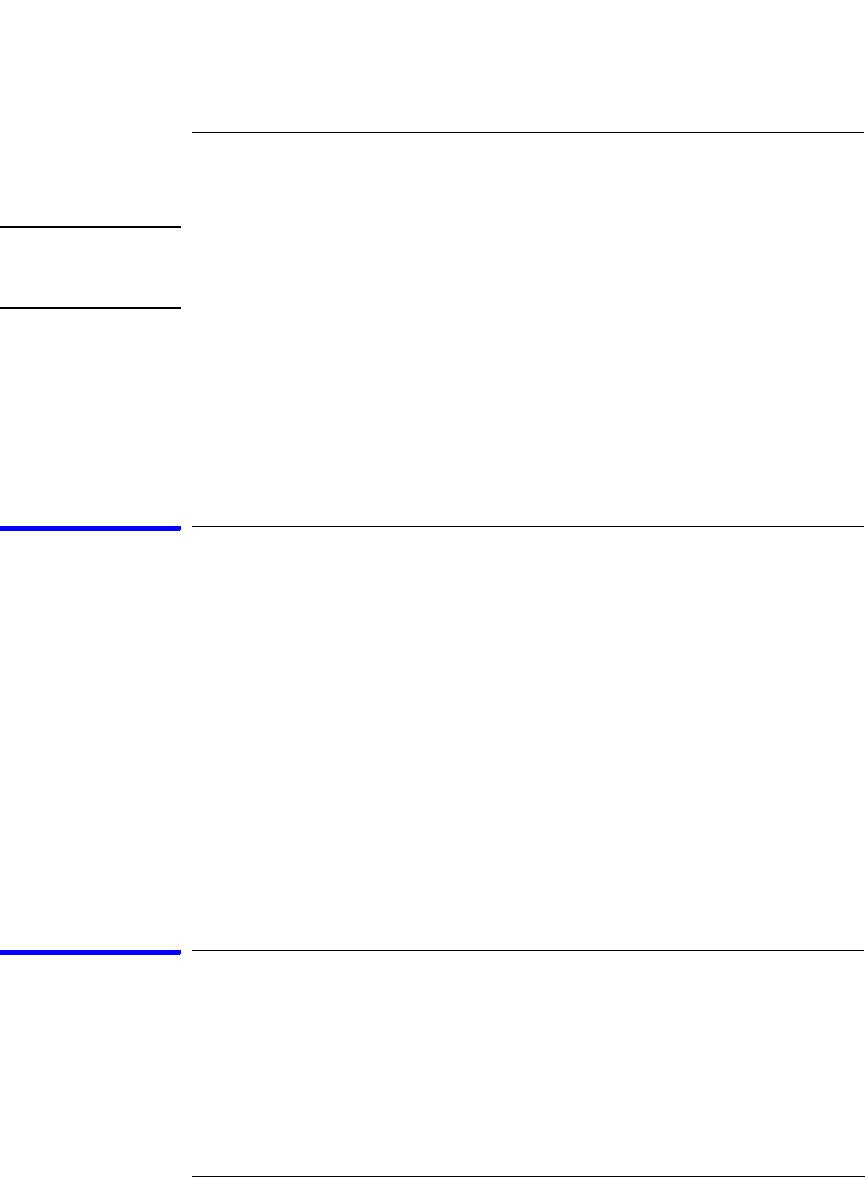User's Manual
Table Of Contents
- Agilent Technologies 16750A/B Logic Analyzer
- Agilent Technologies 16750A/B Logic Analyzer
- Contents
- Getting Started
- Step 1. Connect the logic analyzer to the device under test
- Step 2. Choose the sampling mode
- Step 3. Format labels for the probed signals
- Step 4. Define the trigger condition
- Step 5. Run the measurement
- Step 6. Display the captured data
- For More Information...
- Example: Timing measurement on counter board
- Example: State measurement on counter board
- Task Guide
- Probing the Device Under Test
- Choosing the Sampling Mode
- To select transitional timing or store qualified
- Formatting Labels for Logic Analyzer Probes
- Setting Up Triggers and Running Measurements
- Displaying Captured Data
- Using Symbols
- Printing/Exporting Captured Data
- Cross-Triggering
- Solving Logic Analysis Problems
- Saving and Loading Logic Analyzer Configurations
- Reference
- The Sampling Tab
- The Format Tab
- Importing Netlist and ASCII Files
- The Trigger Tab
- The Symbols Tab
- Error Messages
- Must assign Pod 1 on the master card to specify actions for flags
- Branch expression is too complex
- Cannot specify range on label with clock bits that span pod pairs
- Counter value checked as an event, but no increment action specified
- Goto action specifies an undefined level
- Maximum of 32 Channels Per Label
- Hardware Initialization Failed
- Must assign another pod pair to specify actions for flags
- No more Edge/Glitch resources available for this pod pair
- No more Pattern resources available for this pod pair
- No Trigger action found in the trace specification
- Slow or Missing Clock
- Timer value checked as an event, but no start action specified
- Trigger function initialization failure
- Trigger inhibited during timing prestore
- Trigger Specification is too complex
- Waiting for Trigger
- Analyzer armed from another module contains no "Arm in from IMB" event
- Specifications and Characteristics
- Concepts
- Understanding Logic Analyzer Triggering
- Understanding State Mode Sampling Positions
- Getting Started
- Glossary
- Index

186
Chapter 3: Reference
Specifications and Characteristics
Specifications and Characteristics
NOTE: For a complete comparison of all logic analyzer specifications and
characteristics refer to the "Agilent Technologies 16700 Series Logic Analysis
System Product Overview".
• “Agilent 16750A/B Logic Analyzer Specifications” on page 186
• “Agilent 16750A/B Logic Analyzer Characteristics” on page 186
• “What is a Specification?” on page 189
• “What is a Characteristic?” on page 189
Agilent 16750A/B Logic Analyzer Specifications
The specifications are the performance standards against which the
product is tested. These specifications apply only to the Agilent
Technologies 16750A/B 400 MHz State/2 GHz Timing Zoom logic
analyzer:
Maximum State Clock Speed: 400 MHz
Threshold Accuracy: +/-(65 mV + 1.5% of threshold setting)
Minimum Master-to-Master Clock Time: 5.0 ns at 200 MHz
2.5 ns at 400 MHz
Setup/Hold Time:
*Single Clock, Single Edge: 4.5/-2.0 ns through -2.0/4.5 ns,
adjustable in 100-ps increments
*Multiple Edges: 5.0/-2.0 ns through -1.5/4.5 ns,
adjustable in 100-ps increments
* Specified for an input signal VH=-0.9 V, VL=-1.7 V, threshold=-1.3 V,
slew rate=1 V/ns
Agilent 16750A/B Logic Analyzer
Characteristics
The characteristics are not specifications, but are included as
additional information.










